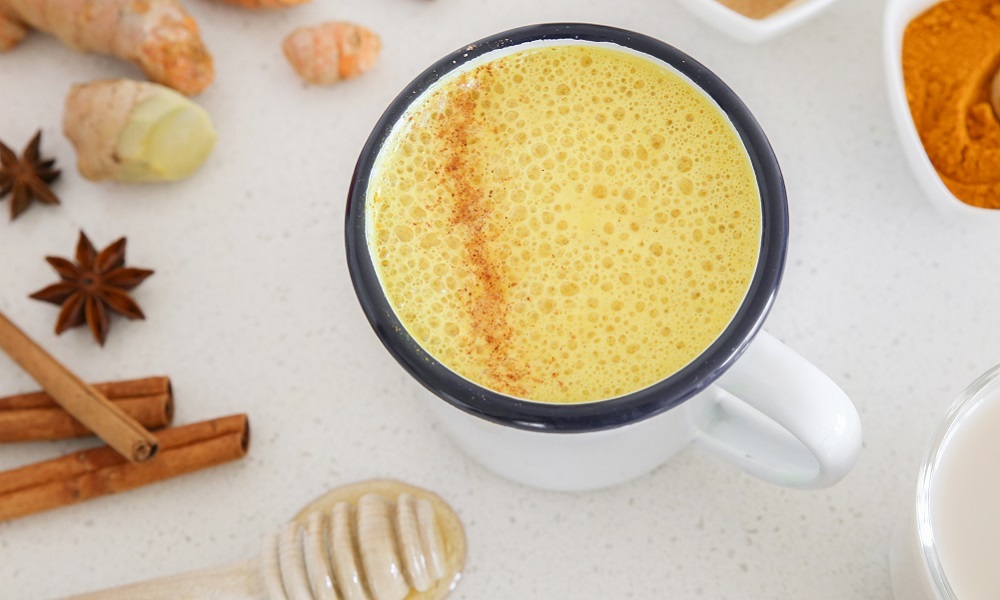What is inflammation? And, what role does diet play in lowering inflammation in the body?
Inflammation is our body’s natural way of protecting itself from illness and stimulating healing. It’s activity of our immune system and it’s involved with tissue maintenance.
Dr Aimee Dordevic is a Nutrition Science Lecturer and Researcher in the Department of Nutrition, Dietetics and Food, Faculty of Medicine, Nursing and Health Sciences at Monash University. Her research interests include the role of diet in inflammation and immunity, and the analysis of inflammation and metabolism of humans in response to food.
She says that people are most familiar with the classical signs of inflammation: heat, redness, swelling, pain and loss of function at the site.
‘Inflammation is a good thing,’ she tells Wellbeing by Teacher. ‘When you have an injury, for example a broken bone or you have a splinter or even if you get a cold and you experience a sore throat, inflammation is basically your immune system responding to the thing that’s damaging the body. It’s the immune system getting to that site and actually resolving the problem, so inflammation is a really important process in the body.’
Milder inflammation can also occur in body when it is exercising. ‘Immune cells can get into the tissue that we’ve exercised and actually help them to regenerate and become stronger’ Dordevic says.
While inflammation can help to heal the body, sustained inflammation is associated with increased risk of chronic diseases like diabetes, heart disease, and obesity.
‘Healthy inflammation is a process that is activated when needed, and has an off switch. It becomes an area of concern when it doesn’t turn off,’ Dordevic says. ‘Ongoing and unresolved inflammation is really an underlying condition to all lifestyle and metabolic-related diseases like cardio-vascular disease, type 2 diabetes, as well as cancers..
‘It’s a component of those conditions and that type of inflammation occurs over long periods of time and at very low levels. It’s actually very difficult to measure this kind of inflammation because it’s at such low levels and there’s such variability across the population; actually being able to pinpoint that kind of inflammation and measure it is inherently difficult.’
Which foods help to lower inflammation?
Dordevic says that when it comes to diet and inflammation, it’s not a case of adding a single ingredient to your daily food intake. Rather, it needs to be looked at as a whole of diet approach.
‘Turmeric lattes, for example, have become really popular. If you’re having a turmeric latte every day but eating a really unhealthy diet, it’s actually not going to lower inflammation for you,’ she says.
‘The things that would normally be included in a healthy eating plan or dietary pattern are fruits and vegetables, unsaturated fats (the fats you’d find in plant oils and avocados), the Omega-3 fats you’d find in oily fish, and fibre-containing foods like wholegrains. They are associated with lowering inflammation.’
Dordevic says that herbs and spices can also play a role. ‘Lots of components of foods contribute to a healthy immune system. One thing I would recommend is using a wide range, so lots of different fruits and vegetables, lots of different herbs and spices, and incorporating those into a dietary pattern would help with lowering inflammation, and keeping a healthy immune system.’
In contrast, highly processed, high fat and high sugar foods can cause inflammation. ‘Again, it comes back to that whole dietary pattern. If you were to go out and have a burger but you have an overall pretty healthy diet, it’s not really an issue. But when those foods are consumed on a regular basis, the majority of the time, over a long period of time, it becomes more of an issue,’ Dordevic says.
Other factors that influence inflammation
According to Dordevic, the main factor that influences inflammation is overall health status. ‘If you have ongoing chronic health conditions, then you’re likely to be in some state of inflammation,’ she says.
‘In the field of nutrition in particular, body mass and the amount of fat tissue is really important. We know that people with obesity are at high risk of having low-grade inflammation, which can be difficult to measure. So maintaining a healthy body weight is critical in managing this type of inflammation.’
Even though exercise can cause some inflammation, especially when the body is healing after exercise, exercising regularly can help to manage inflammation and keep your inflammation processes behaving normally.
‘So an overall healthy diet, exercising regularly and maintaining a healthy body weight all help to lower inflammation,’ Dordevic says. ‘It’s all those things that we know about an overall healthy lifestyle that actually prevents us from having unwanted inflammation.’
Finding out more
Anti-inflammatory diets have become more popular in recent years. Dordevic believes part of the reason for this is people are becoming much more interested and educated on nutrition-related health. But, she cautions that there is a lot of misinformation out there, so people need to ensure they access information from trusted sources.
For people wanting to learn about the role of diet in inflammation, Dordevic recommends looking at the Food as Medicine course run through the FutureLearn platform at Monash University. It’s a free, three-week course that explores how food can be important both in preventative health and as an aid in the management of certain chronic diseases.
‘There are topics like food and its role in prevention and treatment, food and the gut, food and the brain, food and weight and lots of different topics within that MOOC. And, it’s open to anybody,’ she says.
How do you care for your own health and wellbeing? Do you have a story you’d like to share with Wellbeing by Teacher? Here’s a handy guide on how to get started.


